Arthrofibrosis (loss of motion)
Use of Knee Extension Device During Rehabilitation of a Patient with Type 3 Arthrofibrosis after ACL Reconstruction.
Biggs A, Shelbourne KD. North Am J Sports Phys Ther. 2006; 1: 124-131.
 …Arthrofibrosis is a frequent complication following rehabilitation of a patient with anterior cruciate ligament (ACL) reconstruction. Although prevention is the best treatment, little information exists within the literature regarding the management and rehabilitation intervention for arthrofibrosis…
…Arthrofibrosis is a frequent complication following rehabilitation of a patient with anterior cruciate ligament (ACL) reconstruction. Although prevention is the best treatment, little information exists within the literature regarding the management and rehabilitation intervention for arthrofibrosis…
Classification and management of arthrofibrosis of the knee after anterior cruciate ligament reconstruction.
Shelbourne KD, Patel DV, Martini DF: Am J Sports Med. 1996; 24: 857-862.
 We report 72 patients with disabling knee arthrofibrosis who were treated at our clinic. All patients had painful restriction of extension or limitation of both extension and flexion that had persisted despite physical therapy. The level of arthrofibrosis was categorized into one of four types:…
We report 72 patients with disabling knee arthrofibrosis who were treated at our clinic. All patients had painful restriction of extension or limitation of both extension and flexion that had persisted despite physical therapy. The level of arthrofibrosis was categorized into one of four types:…
Treatment of limited motion after anterior cruciate ligament reconstruction.
Shelbourne KD, Patel DV: Knee Surg Sports Traumatol, Arthrosc. 1999;7:85-92.
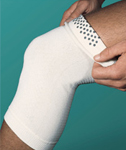 Limited motion or arthrofibrosis after anterior cruciate ligament (ACL) reconstruction causes significant pain and functional impairment. Based on physical findings and loss of motion compared with the opposite normal knee, classification systems for the diagnosis and treatment of arthrofibrosis have been developed…
Limited motion or arthrofibrosis after anterior cruciate ligament (ACL) reconstruction causes significant pain and functional impairment. Based on physical findings and loss of motion compared with the opposite normal knee, classification systems for the diagnosis and treatment of arthrofibrosis have been developed…
Outpatient surgical management of arthrofibrosis after anterior cruciate ligament surgery.
Shelbourne KD, Johnson GE: Am J Sports Med. 1994;22:192-197.
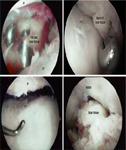 We present a consecutive series of nine patients who were referred to us because of arthrofibrosis (loss of > 15 degrees of extension) after intraarticular anterior cruciate ligament reconstruction using autogenous patellar tendon (eight patients) or semitendinosus (one patient) graft…
We present a consecutive series of nine patients who were referred to us because of arthrofibrosis (loss of > 15 degrees of extension) after intraarticular anterior cruciate ligament reconstruction using autogenous patellar tendon (eight patients) or semitendinosus (one patient) graft…
Arthrofibrosis in acute anterior cruciate ligament reconstruction. The effect of timing of reconstruction and rehabilitation.
Shelbourne KD, Wilckens JH, Mollabashy A, DeCarlo M: Am J Sports Med. 1991;19:332-336.
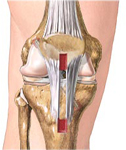 Arthrofibrosis is a potential complication of acute ACL reconstruction. Arthrofibrosis prevents the patient from regaining full range of motion, particularly the terminal 5 degrees of full extension, postoperatively. We did a retrospective study of 169 acute ACL reconstructions in a population of young athletes (average age, 22 years)…
Arthrofibrosis is a potential complication of acute ACL reconstruction. Arthrofibrosis prevents the patient from regaining full range of motion, particularly the terminal 5 degrees of full extension, postoperatively. We did a retrospective study of 169 acute ACL reconstructions in a population of young athletes (average age, 22 years)…
Arthroscopic treatment of symptomatic extension block complicating anterior cruciate ligament reconstruction.
Shelbourne KD, Fisher SE: Am J Sports Med. 1993;21:558-564, 1993.
 Arthrofibrosis resulting in loss of knee extension compromises the results of anterior cruciate ligament reconstructions. We designed a study to clarify the symptoms and to evaluate the results of arthroscopic treatment of this complication. Forty-two patients in a series of 959 consecutive open…
Arthrofibrosis resulting in loss of knee extension compromises the results of anterior cruciate ligament reconstructions. We designed a study to clarify the symptoms and to evaluate the results of arthroscopic treatment of this complication. Forty-two patients in a series of 959 consecutive open…
Static progressive stretch improves range of motion in arthrofibrosis following total knee arthroplasty.
Bonutti PM, Marulanda GA, McGrath MS, Mont MA, Zywiel MG. Knee Surg Sports Traumatol Arthrosc. 2010 Feb;18(2):194-9. doi: 10.1007/s00167-009-0947-1. Epub 2009 Oct 14.
 Arthrofibrosis is a relatively common complication after total knee arthroplasty that negatively affects function and quality of life. Static progressive stretching is a technique that has shown promising results in the treatment of contractures of the elbow, ankle, wrist and knee…
Arthrofibrosis is a relatively common complication after total knee arthroplasty that negatively affects function and quality of life. Static progressive stretching is a technique that has shown promising results in the treatment of contractures of the elbow, ankle, wrist and knee…
Arthrofibrosis of the knee.
Magit D, Wolff A, Sutton K, Medvecky MJ. J Am Acad Orthop Surg. 2007 Nov;15(11):682-94.
 Better understanding of surgical timing, improved surgical technique, and advanced rehabilitation protocols has led to decreased incidence of motion loss after anterior cruciate ligament injury and reconstruction. However, motion loss from high-energy, …
Better understanding of surgical timing, improved surgical technique, and advanced rehabilitation protocols has led to decreased incidence of motion loss after anterior cruciate ligament injury and reconstruction. However, motion loss from high-energy, …
A new treatment strategy for severe arthrofibrosis of the knee. A review of twenty-two cases.
Wang JH, Zhao JZ, He YH. J Bone Joint Surg Am. 2006 Jun;88(6):1245-50.
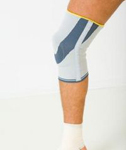 BACKGROUND: To reduce the morbidity of traditional quadricepsplasty for the treatment of severe arthrofibrosis of the knee, we instituted a treatment regimen consisting of an initial extra-articular mini-invasive quadricepsplasty and subsequent intra-articular arthroscopic lysis of adhesions during …
BACKGROUND: To reduce the morbidity of traditional quadricepsplasty for the treatment of severe arthrofibrosis of the knee, we instituted a treatment regimen consisting of an initial extra-articular mini-invasive quadricepsplasty and subsequent intra-articular arthroscopic lysis of adhesions during …
Arthroscopic treatment of patients with moderate arthrofibrosis after total knee replacement.
Jerosch J, Aldawoudy AM. Knee Surg Sports Traumatol Arthrosc. 2007 Jan;15(1):71-7. Epub 2006 May 19.
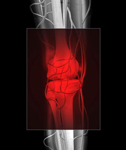 The purpose of this study was to document the effect of arthroscopic management in patients with knee stiffness after total knee replacement. We present a case series study, in which 32 patients have been treated for moderate arthrofibrosis of the knee after total knee replacement, …
The purpose of this study was to document the effect of arthroscopic management in patients with knee stiffness after total knee replacement. We present a case series study, in which 32 patients have been treated for moderate arthrofibrosis of the knee after total knee replacement, …
Alpha-smooth muscle actin containing contractile fibroblastic cells in human knee arthrofibrosis tissue. Winner of the AGA-DonJoy Award 2003.
Unterhauser FN, Bosch U, Zeichen J, Weiler A. Arch Orthop Trauma Surg. 2004 Nov;124(9):585-91. Epub 2004 Sep 18.
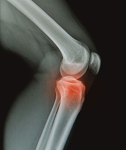 INTRODUCTION: Primary arthrofibrosis is of major concern after joint trauma or knee ligament surgery. The underlying mechanism in detail remains unclear. Highly differentiated fibroblastic cells, so-called myofibroblasts, express the actin isoform alpha-smooth muscle actin (ASMA) and …
INTRODUCTION: Primary arthrofibrosis is of major concern after joint trauma or knee ligament surgery. The underlying mechanism in detail remains unclear. Highly differentiated fibroblastic cells, so-called myofibroblasts, express the actin isoform alpha-smooth muscle actin (ASMA) and …
Arthrofibrosis following total knee replacement; does therapeutic warfarin make a difference?
Walton NP, Jahromi I, Dobson PJ, Angel KR, Lewis PL, Campbell DG. Knee. 2005 Apr;12(2):103-6.
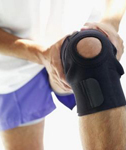 Arthrofibrosis following total knee replacement (TKR) is a relatively common complication which results in a reduction in knee range of movement and patient dissatisfaction. A retrospective study examined the relationship between anticoagulation with therapeutic warfarin and rates of arthrofibrosis following TKR …
Arthrofibrosis following total knee replacement (TKR) is a relatively common complication which results in a reduction in knee range of movement and patient dissatisfaction. A retrospective study examined the relationship between anticoagulation with therapeutic warfarin and rates of arthrofibrosis following TKR …
Arthrofibrosis of the knee following ligament surgery.
DeHaven KE, Cosgarea AJ, Sebastianelli WJ. Instr Course Lect. 2003;52:369-81. Review.
 Arthrofibrosis of the knee is one of the most serious complications that can result from ligament surgery. Reported incidence of arthrofibrosis following anterior cruciate ligament reconstruction ranges from 4% to 35%. The loss of motion caused by arthrofibrosis can be …
Arthrofibrosis of the knee is one of the most serious complications that can result from ligament surgery. Reported incidence of arthrofibrosis following anterior cruciate ligament reconstruction ranges from 4% to 35%. The loss of motion caused by arthrofibrosis can be …
The role of capsular distention in the arthroscopic management of arthrofibrosis of the knee: A technical consideration.
Millett PJ, Steadman JR. Arthroscopy. 2001 Sep;17(7):E31.
 Arthroscopic treatment of arthrofibrosis of the knee is a technically challenging procedure. Capsular distention with fluid before arthroscopy results in easier and safer insertion of arthroscopic instruments with improved arthroscopic visualization. In addition, it stretches the entire capsule, …
Arthroscopic treatment of arthrofibrosis of the knee is a technically challenging procedure. Capsular distention with fluid before arthroscopy results in easier and safer insertion of arthroscopic instruments with improved arthroscopic visualization. In addition, it stretches the entire capsule, …
Knee arthrofibrosis: prevention and management of a potentially devastating condition.
Eakin CL. Phys Sportsmed. 2001 Mar;29(3):31-42. doi: 10.3810/psm.2001.03.668.
 Knee arthrofibrosis, which usually occurs after trauma or surgery, can inhibit joint biomechanics. An elaborate interaction of growth factors and other inflammatory mediators initiates and coordinates this deleterious tissue proliferation. Knowledge of risk factors can aid clinicians in helping patients …
Knee arthrofibrosis, which usually occurs after trauma or surgery, can inhibit joint biomechanics. An elaborate interaction of growth factors and other inflammatory mediators initiates and coordinates this deleterious tissue proliferation. Knowledge of risk factors can aid clinicians in helping patients …
The surgical treatment of arthrofibrosis of the knee.
Cosgarea AJ, DeHaven KE, Lovelock JE. Am J Sports Med. 1994 Mar-Apr;22(2):184-91.
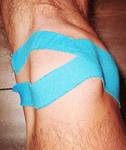 Sixty-one lysis of adhesion procedures were performed for arthrofibrosis of the knee between 1981 and 1990. In 43 cases (37 patients) the etiology was prior knee ligament surgery. Ten cases had sustained fractures about the knee and eight had miscellaneous etiologies. Six patients required a second lysis of …
Sixty-one lysis of adhesion procedures were performed for arthrofibrosis of the knee between 1981 and 1990. In 43 cases (37 patients) the etiology was prior knee ligament surgery. Ten cases had sustained fractures about the knee and eight had miscellaneous etiologies. Six patients required a second lysis of …
Problems in regaining full extension of the knee after anterior cruciate ligament reconstruction: does arthrofibrosis exist?
Dandy DJ, Edwards DJ. Knee Surg Sports Traumatol Arthrosc. 1994;2(2):76-9.
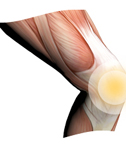 A total of 194 patients was reviewed after ACL reconstruction using a patellar tendon graft or Leeds-Keio prosthesis supplemented with a MacIntosh lateral substitution. There were five groups of patients: patellar tendon with cast immobilisation in flexion (n = 34); restricted extension but no cast (n = 40); …
A total of 194 patients was reviewed after ACL reconstruction using a patellar tendon graft or Leeds-Keio prosthesis supplemented with a MacIntosh lateral substitution. There were five groups of patients: patellar tendon with cast immobilisation in flexion (n = 34); restricted extension but no cast (n = 40); …
Arthroscopic adhesiolysis of the knee joint in arthrofibrosis.
Cohen I, Hendel D, Rzetelny V. Bull Hosp Jt Dis. 1993 Spring;53(1):66-7.
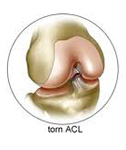 Arthroscopically assisted adhesiolysis is a relatively new method for the treatment of arthrofibrosis of the knee. It is as effective as other known techniques and has the advantage of being minimally traumatic to the joint and the surrounding soft tissues. The operative method is presented here, …
Arthroscopically assisted adhesiolysis is a relatively new method for the treatment of arthrofibrosis of the knee. It is as effective as other known techniques and has the advantage of being minimally traumatic to the joint and the surrounding soft tissues. The operative method is presented here, …
Arthroscopic lysis in knee arthrofibrosis.
Vaquero J, Vidal C, Medina E, Baena J. Arthroscopy. 1993;9(6):691-4.
 Arthrofibrosis continues to be a difficult complication in articular surgery on the knee. We present our experience in 21 cases of arthroscopic lysis as an alternative to mobilization under anesthesia. The technique begins with the liberation of the adhesions of the suprapatellar pouch, …
Arthrofibrosis continues to be a difficult complication in articular surgery on the knee. We present our experience in 21 cases of arthroscopic lysis as an alternative to mobilization under anesthesia. The technique begins with the liberation of the adhesions of the suprapatellar pouch, …
Arthroscopic management of arthrofibrosis of the knee, including infrapatellar contraction syndrome.
Richmond JC, al Assal M. Arthroscopy. 1991;7(2):144-7.
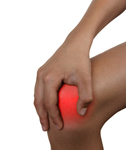 Infrapatellar contracture syndrome (IPCS) has been defined as a subcategory of arthrofibrosis of the knee following surgery. We present a systematic, wholly arthroscopic surgical approach to this difficult problem. The technique includes assessment of patellar mobility, resection of intraarticular adhesions, …
Infrapatellar contracture syndrome (IPCS) has been defined as a subcategory of arthrofibrosis of the knee following surgery. We present a systematic, wholly arthroscopic surgical approach to this difficult problem. The technique includes assessment of patellar mobility, resection of intraarticular adhesions, …
Motion-limiting arthrofibrosis of the knee: the role of arthroscopic management.
Sprague NF 3rd. Clin Sports Med. 1987 Jul;6(3):537-49. Review.
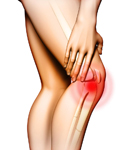 With the advent of effective arthroscopic methods of intra-articular surgery, it has become possible to lyse intra-articular adhesions under direct vision using arthroscopic techniques. This article reviews the present indications for this procedure, the techniques, the methods of after-care, …
With the advent of effective arthroscopic methods of intra-articular surgery, it has become possible to lyse intra-articular adhesions under direct vision using arthroscopic techniques. This article reviews the present indications for this procedure, the techniques, the methods of after-care, …
Arthroscopic treatment of the arthrofibrotic knee.
Kim DH, Gill TJ, Millett PJ. Arthroscopy. 2004 Jul;20 Suppl 2:187-94.
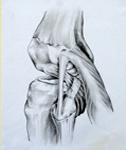 The management of motion loss of the knee is challenging. A clear understanding of the pathoanatomic causes of motion loss is necessary to establish a careful and rational approach to treatment. Early recognition and physical therapy are effective for the majority of patients, …
The management of motion loss of the knee is challenging. A clear understanding of the pathoanatomic causes of motion loss is necessary to establish a careful and rational approach to treatment. Early recognition and physical therapy are effective for the majority of patients, …
Rehabilitation of the arthrofibrotic knee.
Millett PJ, Johnson B, Carlson J, Krishnan S, Steadman JR. Am J Orthop (Belle Mead NJ). 2003 Nov;32(11):531-8. Review.
 This paper describes the postoperative rehabilitation of the arthrofibrotic knee, with specific emphasis on modern rehabilitation techniques. The significance of prevention and early recognition is discussed. The importance of early motion and patellar mobility is emphasized and specific exercises to prevent and …
This paper describes the postoperative rehabilitation of the arthrofibrotic knee, with specific emphasis on modern rehabilitation techniques. The significance of prevention and early recognition is discussed. The importance of early motion and patellar mobility is emphasized and specific exercises to prevent and …
Motion loss after ligament injuries to the knee. Part I: causes.
Millett PJ, Wickiewicz TL, Warren RF. Am J Sports Med. 2001 Sep-Oct;29(5):664-75. Review.
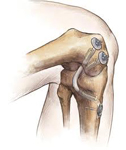 Motion loss continues to be a difficult complication after ligament injury and surgery to the knee. A better understanding of the pathoanatomic causes of motion loss can lead to improved prevention and treatment strategies. When motion loss does occur, early recognition and …
Motion loss continues to be a difficult complication after ligament injury and surgery to the knee. A better understanding of the pathoanatomic causes of motion loss can lead to improved prevention and treatment strategies. When motion loss does occur, early recognition and …
Motion loss after ligament injuries to the knee. Part II: prevention and treatment.
Millett PJ, Wickiewicz TL, Warren RF. Am J Sports Med. 2001 Nov-Dec;29(6):822-8.
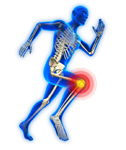 This is the second part of a two-part review on motion problems after ligament injuries to the knee. The first part, published in the September/October 2001 issue, discussed normal and abnormal knee motion, terminology, risk factors, and pathoanatomy. The purpose of this article is to …
This is the second part of a two-part review on motion problems after ligament injuries to the knee. The first part, published in the September/October 2001 issue, discussed normal and abnormal knee motion, terminology, risk factors, and pathoanatomy. The purpose of this article is to …
ACL Rehabilitation
Loss of normal knee motion after anterior cruciate ligament reconstruction is associated with radiographic arthritic changes after surgery.
Shelbourne, KD, Urch SE, Gray T, Freeman H. Am J Sports Med. 2012;40:108-113.
 BACKGROUND: Meniscectomy and articular cartilage damage have been found to increase the prevalence of osteoarthritis after anterior cruciate ligament reconstruction, but the effect of knee range of motion has not been extensively studied. HYPOTHESES: The prevalence of osteoarthritis as observed on …
BACKGROUND: Meniscectomy and articular cartilage damage have been found to increase the prevalence of osteoarthritis after anterior cruciate ligament reconstruction, but the effect of knee range of motion has not been extensively studied. HYPOTHESES: The prevalence of osteoarthritis as observed on …
Rehabilitation for Patients Following ACL Reconstruction: A Knee Symmetry Model.
Biggs A, Jenkins WL, Urch SE, Shelbourne KD. N Am J Sports Phys Ther. 2009;4:2-12.
 This clinical commentary outlines a new clinical model for anterior cruciate ligament (ACL) rehabilitation, the Knee Symmetry Model. This model has been developed by clinical observation, patient interaction, and by analyzing outcome measures derived from prospective follow-up of patients.
This clinical commentary outlines a new clinical model for anterior cruciate ligament (ACL) rehabilitation, the Knee Symmetry Model. This model has been developed by clinical observation, patient interaction, and by analyzing outcome measures derived from prospective follow-up of patients.
Incidence of subsequent injury to either knee within 5 years after anterior cruciate ligament reconstruction with patellar tendon autograft.
Shelbourne KD, Haro M, Gray T. Am J Sports Med. 2009;37:246-251.
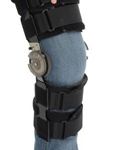 BACKGROUND: The risk of subsequent anterior cruciate ligament injury to either knee after surgery based on sex, age, and activity has not been extensively studied. HYPOTHESES: Women have a higher incidence of anterior cruciate ligament injury to the contralateral knee after surgery than men but do not have …
BACKGROUND: The risk of subsequent anterior cruciate ligament injury to either knee after surgery based on sex, age, and activity has not been extensively studied. HYPOTHESES: Women have a higher incidence of anterior cruciate ligament injury to the contralateral knee after surgery than men but do not have …
Minimum 10-year results after anterior cruciate ligament reconstruction: how the loss of normal knee motion compounds other factors related to the development of osteoarthritis after surgery.
Shelbourne KD, Gray T. Am J Sports Med. 2009;37:471-480.
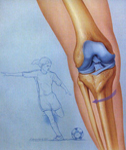 BACKGROUND: Few long-term studies exist that evaluate how the loss of normal knee range of motion affects results after anterior cruciate ligament reconstruction. HYPOTHESIS: Patients with normal knee motion will have higher subjective scores than patients with less than normal motion.
BACKGROUND: Few long-term studies exist that evaluate how the loss of normal knee range of motion affects results after anterior cruciate ligament reconstruction. HYPOTHESIS: Patients with normal knee motion will have higher subjective scores than patients with less than normal motion.
What I have learned about the ACL: utilizing a progressive rehabilitation scheme to achieve total knee symmetry after anterior cruciate ligament reconstruction.
Shelbourne KD, Klotz C. J Orthop Sci 2006;11:318-25.
 Anterior cruciate ligament surgery and rehabilitation have changed drastically during the past 30 years. The patellar tendon autograft fixed with buttons provides tight bone-to-bone placement of the graft and quick bony healing, which allows accelerated rehabilitation to obtain full range of motion and strength.
Anterior cruciate ligament surgery and rehabilitation have changed drastically during the past 30 years. The patellar tendon autograft fixed with buttons provides tight bone-to-bone placement of the graft and quick bony healing, which allows accelerated rehabilitation to obtain full range of motion and strength.
Effects of patellar tendon width and preoperative quadriceps strength on strength return after anterior cruciate ligament reconstruction with ipsilateral bone-patellar tendon-bone autograft
Shelbourne KD, Johnson BC. Am J Sports Med. 2004;32:1474-1478.
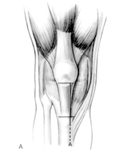 BACKGROUND: Strength return after anterior cruciate ligament reconstruction varies greatly. HYPOTHESIS: Patients with small patellar tendons and weak preoperative quadriceps muscle strength would not be able to regain full strength. STUDY DESIGN: Retrospective review of …
BACKGROUND: Strength return after anterior cruciate ligament reconstruction varies greatly. HYPOTHESIS: Patients with small patellar tendons and weak preoperative quadriceps muscle strength would not be able to regain full strength. STUDY DESIGN: Retrospective review of …
Anterior cruciate ligament reconstruction with autogenous patellar tendon graft followed by accelerated rehabilitation. A two- to nine-year followup.
Shelbourne KD, Gray T. Am J Sports Med. 1997;25:786-795.
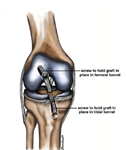 We sought to determine the long-term results of 1057 consecutive patients who underwent an anterior cruciate ligament reconstruction with an autogenous patellar tendon graft from 1987 through 1993 and who followed an accelerated rehabilitation program. The patients were followed prospectively …
We sought to determine the long-term results of 1057 consecutive patients who underwent an anterior cruciate ligament reconstruction with an autogenous patellar tendon graft from 1987 through 1993 and who followed an accelerated rehabilitation program. The patients were followed prospectively …
Evaluation of knee stability before and after participation in a functional sports agility program during rehabilitation after anterior cruciate ligament reconstruction.
Shelbourne KD, Davis TJ. Am J Sports Med. 1999;27:156-161.
 We sought to determine whether participation in a functional sports agility program as early as 4 weeks after anterior cruciate ligament reconstruction with autogenous patellar tendon graft would affect objective knee stability in 603 patients. The rehabilitation program prescribed a functional sports agility …
We sought to determine whether participation in a functional sports agility program as early as 4 weeks after anterior cruciate ligament reconstruction with autogenous patellar tendon graft would affect objective knee stability in 603 patients. The rehabilitation program prescribed a functional sports agility …
Ligament stability two to six years after anterior cruciate ligament reconstruction with autogenous patellar tendon graft and participation in accelerated rehabilitation program.
JH, et al. Am J Sports Med. 1995;23:575-579.
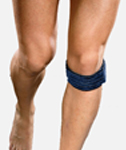 We studied patients who participated in our accelerated rehabilitation program after anterior cruciate ligament reconstructive surgery to determine if they showed signs of patellar tendon graft stretching. This program initiated in 1987 emphasizes early full hyperextension, early weightbearing as tolerated, …
We studied patients who participated in our accelerated rehabilitation program after anterior cruciate ligament reconstructive surgery to determine if they showed signs of patellar tendon graft stretching. This program initiated in 1987 emphasizes early full hyperextension, early weightbearing as tolerated, …
Preventing anterior knee pain after anterior cruciate ligament reconstruction.
Shelbourne KD, Trumper RV. Am J Sports Med. 1997;25:41-47.
 We studied a group of 602 patients who had anterior cruciate ligament reconstructions between 1987 and 1992. An autogenous patellar tendon graft was used, regardless of preexisting patellofemoral pain or chondromalacia. The surgeon and rehabilitation protocol were the same for all patients, …
We studied a group of 602 patients who had anterior cruciate ligament reconstructions between 1987 and 1992. An autogenous patellar tendon graft was used, regardless of preexisting patellofemoral pain or chondromalacia. The surgeon and rehabilitation protocol were the same for all patients, …
Effect on knee stability if full hyperextension is restored immediately after autogenous bone-patellar tendon-bone anterior cruciate ligament reconstruction.
Rubinstein RA, Jr., Shelbourne KD, VanMeter CD, et al. Am J Sports Med. 1995;23:365-368.
 We sought to determine if knee stability after autogenous bone-patellar tendon-bone anterior cruciate ligament reconstruction was adversely affected by obtaining immediate full hyperextension. We selected patients based on degree of knee hyperextension. Group 1 (46 men and 51 women), …
We sought to determine if knee stability after autogenous bone-patellar tendon-bone anterior cruciate ligament reconstruction was adversely affected by obtaining immediate full hyperextension. We selected patients based on degree of knee hyperextension. Group 1 (46 men and 51 women), …
Correlation of remaining patellar tendon width with quadriceps strength after autogenous bone-patellar tendon-bone anterior cruciate ligament reconstruction.
Shelbourne KD, Rubinstein RA, VanMeter CD, et al. Am J Sports Med. 1994;22:774-778.
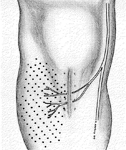 One hundred twenty-one patients were prospectively studied to determine whether the different remaining patellar tendon widths after central 10-mm bone-patellar tendon-bone graft harvest influenced the rate and level of quadriceps strength achieved during rehabilitation. Size of the patellar tendon width, …
One hundred twenty-one patients were prospectively studied to determine whether the different remaining patellar tendon widths after central 10-mm bone-patellar tendon-bone graft harvest influenced the rate and level of quadriceps strength achieved during rehabilitation. Size of the patellar tendon width, …
Isolated autogenous bone-patellar tendon-bone graft site morbidity.
Rubinstein RA, Shelbourne KD, VanMeter, et al. Am J Sports Med. 1994;22:324-327.
 To distinguish between morbidity caused by the isolated patellar tendon graft harvest and morbidity associated with anterior cruciate ligament reconstruction when the graft is harvested from the involved knee, we studied 20 patients who had an isolated contralateral graft harvest for anterior cruciate ligament reconstruction …
To distinguish between morbidity caused by the isolated patellar tendon graft harvest and morbidity associated with anterior cruciate ligament reconstruction when the graft is harvested from the involved knee, we studied 20 patients who had an isolated contralateral graft harvest for anterior cruciate ligament reconstruction …
Accelerated rehabilitation after anterior cruciate ligament reconstruction.
Shelbourne KD, Nitz P. Am J Sports Med. 1990;18, 292-299.
 To overcome many of the complications after ACL reconstruction (prolonged knee stiffness, limitation of complete extension, delay in strength recovery, anterior knee pain), yet still maintain knee stability, we developed a rehabilitation protocol that emphasizes full knee extension on the first postoperative day and immediate…
To overcome many of the complications after ACL reconstruction (prolonged knee stiffness, limitation of complete extension, delay in strength recovery, anterior knee pain), yet still maintain knee stability, we developed a rehabilitation protocol that emphasizes full knee extension on the first postoperative day and immediate…
Anterior cruciate ligament injury: evaluation of intraarticular reconstruction of acute tears without repair. Two to seven year followup of 155 athletes.
Shelbourne KD, Whitaker HJ, McCarroll JR, et al. Am J Sports Med. 1990;18:484-489.
 To evaluate the effectiveness of our treatment regimen, we retrospectively studied the surgically treated knees of 155 athletes, aged 15 to 42 years, who had sustained acute ACL tears. All were treated with ligament excision and intraarticular bone-patellar tendon-bone reconstruction followed by early motion with …
To evaluate the effectiveness of our treatment regimen, we retrospectively studied the surgically treated knees of 155 athletes, aged 15 to 42 years, who had sustained acute ACL tears. All were treated with ligament excision and intraarticular bone-patellar tendon-bone reconstruction followed by early motion with …
A perioperative rehabilitation program for anterior cruciate ligament surgery.
Arnold T, Shelbourne KD. Phys Sports Med. 2000;28:31-44.
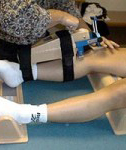 Rehabilitation programs have progressed alongside surgical advances in anterior cruciate ligament reconstruction. A perioperative program has been successfully used at our clinic for more than 10 years to reduce postoperative complications and return patients to activity safely and quickly.
Rehabilitation programs have progressed alongside surgical advances in anterior cruciate ligament reconstruction. A perioperative program has been successfully used at our clinic for more than 10 years to reduce postoperative complications and return patients to activity safely and quickly.
TIMING OF SURGERY
Timing of surgery in anterior cruciate ligament-injured knees.
Shelbourne KD, Patel DV: Knee Surg Sports Traumatol Arthros. 1995;3:148-156.
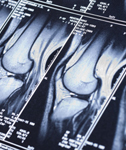 Despite recent advances in the surgical techniques of anterior cruciate ligament (ACL) reconstruction in the past two decades, there is no consensus of opinion as to the ideal timing for ACL surgery. Based on the evolution of management of patients with ACL injuries over the period 1982-1994, …
Despite recent advances in the surgical techniques of anterior cruciate ligament (ACL) reconstruction in the past two decades, there is no consensus of opinion as to the ideal timing for ACL surgery. Based on the evolution of management of patients with ACL injuries over the period 1982-1994, …
Arthrofibrosis in acute anterior cruciate ligament reconstruction. The effect of timing of reconstruction and rehabilitation.
Shelbourne KD, Wilckens JH, Mollabashy A, DeCarlo M. Am J Sports Med. 1991;19:332-336.
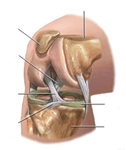 Arthrofibrosis is a potential complication of acute ACL reconstruction. Arthrofibrosis prevents the patient from regaining full range of motion, particularly the terminal 5 degrees of full extension, postoperatively. We did a retrospective study of 169 acute ACL reconstructions in a population of young athletes (average age, 22 years) …
Arthrofibrosis is a potential complication of acute ACL reconstruction. Arthrofibrosis prevents the patient from regaining full range of motion, particularly the terminal 5 degrees of full extension, postoperatively. We did a retrospective study of 169 acute ACL reconstructions in a population of young athletes (average age, 22 years) …
Locked bucket-handle meniscal tears in knees with chronic anterior cruciate ligament deficiency.
Shelbourne KD, Johnson GE. Am J Sports Med. 1993;21:779-782.
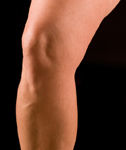 Because we noticed patients had difficulty regaining full range of motion after surgery for a locked bucket-handle meniscal tear with simultaneous reconstruction for a chronic anterior cruciate ligament tear, we adopted a two-stage procedure for this group of patients.
Because we noticed patients had difficulty regaining full range of motion after surgery for a locked bucket-handle meniscal tear with simultaneous reconstruction for a chronic anterior cruciate ligament tear, we adopted a two-stage procedure for this group of patients.

